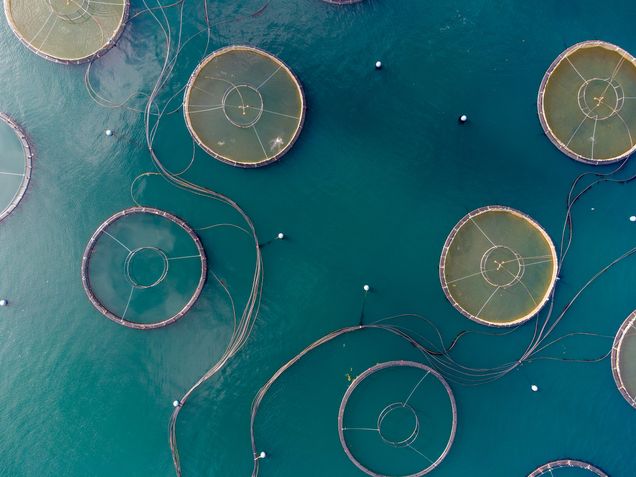Swimming Upstream: Chinese Overseas Investment in Aquaculture

In the next few years, demand for seafood is expected to grow exponentially and the gap between local demand and local production is expected to more than double within the next decade. As the world’s largest home of aquaculture (raising aquatic plants and animals for food), China has been responsible for over half of global production since 2016. However, the sector does not rank highly among the country’s outbound investment or development finance commitments. Concomitantly, Chinese consumers prefer imported rather than domestically produced seafood.
In a new journal article published in Global China Pulse, Kate Hua-Ke Chi and Rebecca Ray explore the paradox between China’s ballooning demand for imported seafood and its growing push for overseas aquaculture investment. Using the “push and pull” framework of researching Chinese investment, the authors seek to learn more about investor incentives and host-country policy space in an environmentally sensitive sector and how to address economic and governance bottlenecks.
Main findings:
- Using cases in eastern and coastal Africa, Chi and Ray demonstrate how Chinese investments in Madagascar’s seafood processing have enjoyed relative success in supporting the development of host-country supply chains and increasing export revenues, while the Kajjansi Aquaculture Research and Development Centre in Uganda fosters knowledge exchange and other joint benefits.
- China has invested $1.3 billion in international aquaculture over the past 15 years.
- One deal accounts for the majority of this investment: Joyvio’s purchase of Australis Seafoods in Chile for $987 million in 2019.
- The investments were primarily made in already existing aquaculture projects, rather than new greenfield investments.
- Mergers and acquisitions allow Chinese firms to circumvent the bottlenecks.
- China’s increasing interest in outbound aquaculture investment is due to two “push” factors: expanding seafood demand from Chinese consumers and increasing awareness of the environmental impacts of the local aquaculture sector.
- Host countries’ interest in Chinese outbound investment is impacted by two “pull” factors: environmental bottlenecks of establishing appropriate protections to mitigate risks and economic bottlenecks from effectively linking new investment to host country development goals.
Aquaculture poses significant risks to aquatic ecosystems and the communities they support. As such, the authors argue that it is crucial for host countries to set up developmental priorities, determine whether expanded aquaculture production falls within those priorities, and, if so, establish robust regulations that optimize sustainable resource management and value-adding opportunities from Chinese capital. Furthermore, as China develops its own environmental protection norms for its domestic aquaculture sector, the impact of outbound investment can be amplified by sharing research gains and best practices, while oversight remains critical to evaluate local environmental and economic health.
A previous version of this journal article was published as a working paper in October 2022.
Read the Journal Article Read the Working Paper Read the Blog